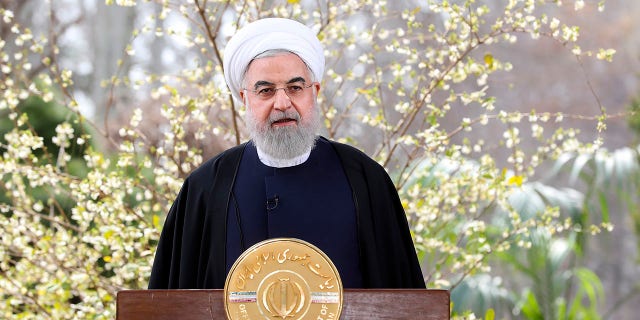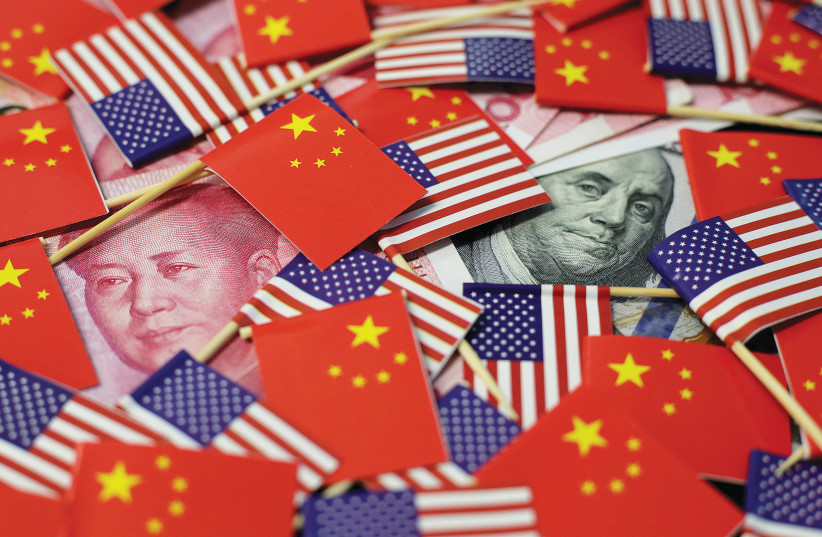
ore than two decades after the fact, the reasons why the United States and the People’s Republic of China (PRC) avoided total war, let alone a nuclear exchange, during their armed conflict in the autumn of 2025 remain a source of dispute. What is clearer is why the Sino–American Littoral War broke out in the first place, and the course it took. Years of worsening U.S.–China relations, supercharged by the 2020 COVID-19 coronavirus pandemic that originated in Wuhan, China, and long fueled by endemic Chinese cyberattacks on American businesses and individuals, military jockeying in the South China Sea, and Beijing’s influence and propaganda campaigns, had created a deep reservoir of ill will and distrust of the other in each country.
When a series of accidents propelled Washington and Beijing into war, both sides were taken by surprise, but each saw the risk differently. The Chinese Communist Party (CCP) feared the domestic repercussions of losing a war but had long convinced itself that Americans were a weak and uncommitted people who would not endanger their comfortable lifestyle. As for American leaders, they were naturally risk-averse and unconvinced they could maintain a major military campaign so far from home against the world’s second-most-powerful military. Each, therefore, tripped into war without a full plan for how to dominate and win. The result of the conflict — the establishment of three geopolitical blocs in East Asia — continues to this day. The resulting cold war between the United States and China became the defining feature of geopolitics in the Asia-Pacific in the middle of the 21st century.
The Gray Rhino: September 8–9, 2025
The Littoral War began with a series of accidental encounters in the skies and waters near Scarborough Shoal, in the South China Sea. Beijing had effectively taken control of the shoal, long a point of contention between China and the Philippines, in 2012. After Philippines president Rodrigo Duterte, who had steadily moved Manila toward China during the late 2010s, was impeached and removed from office, the Philippines’ new president steadily moved to reassert Manila’s claim to the shoal, and by the summer of 2025 sent coastal-patrol boats into waters near the contested territory. When armed People’s Armed Forces Maritime Militia (PAFMM) vessels pushed out the Philippine forces in early July, Manila appealed to Washington under its security treaty for assistance.
Prior Philippine requests for U.S. help in dealing with China had been largely shunted aside by Washington, even during the Trump administration. However, new U.S. president Gavin Newsom, who had been dogged during the 2024 campaign by allegations that Chinese cyber operations had benefited his candidacy, saw the Philippine request as an opportunity to show his willingness to take a hard line against Beijing. Newsom increased U.S. Air Force flights over the contested territory, using air bases made available by Manila, and sent the carrier USS Gerald Ford, along with escort vessels, on a short transit. On two occasions in late July, U.S. and Chinese ships came close to running into each other due to aggressive maneuvering by the People’s Liberation Army Navy (PLAN), and a U.S. Navy FA-18 operating from the Gerald Ford was forced to take emergency evasive action to avoid colliding with a PLANAF J-15. Despite the increasing tensions, the U.S. Navy ships returned to Japan at the beginning of August, yet no diplomatic attempts were made to alter the trajectory of events. The fact that both sides knew some type of armed encounter was increasingly possible, if not probable, yet seemed to ignore the risk, led pundits to call the events surrounding the clash an example of a “gray rhino,” unlike the complete surprise represented by a “black swan” occurrence. Ironically, CCP general secretary Xi Jinping himself had warned about the dangers of “gray rhinos” back in 2018 and 2019.
In response to the brief uptick in U.S. Navy freedom-of-navigation operations near other Chinese-claimed territory in the Spratly and Paracel island chains, Beijing decided to fortify Scarborough Shoal, building airstrips and naval facilities as it had done in the Spratlys. As Scarborough lay only 140 miles from Manila, China’s announcement set off alarm bells in the Philippines. As Chinese naval construction ships approached Scarborough on September 4, dozens of small Philippine boats, many of them private, attempted to block them. On the second day of the maritime encounter, a Chinese frigate rammed a Philippine fishing boat, sinking it, with the loss of two Philippine fishermen. As news spread over the next several days, dozens more Philippine vessels, including the country’s entire coast guard, confronted the Chinese. Though no further ship collisions occurred, worldwide broadcast of video of the maritime confrontation further inflamed tensions.
At this point, on Saturday, September 6, U.S. Indo–Pacific Command, acting directly under orders from U.S. secretary of defense Michele Flournoy, dispatched one guided-missile destroyer, the USS Curtis Wilbur, and the Independence-class littoral combat ship USS Charleston (LCS-18) to the waters off Scarborough, and ordered the USS John C. Stennis aircraft carrier to head from its home port in Bremerton, Wash., to Pearl Harbor. In order not to inflame the high tensions, however, the White House and Pentagon decided not to send the Gerald Ford to the area. Instead, another U.S. guided-missile destroyer, USS Stethem (DDG 63), and a mine-countermeasures ship, the USS Patriot (MCM 7), were ordered to transit the Taiwan Strait. The next day, Beijing announced an air-defense identification zone over the entire South China Sea, demanding that all non-Chinese aircraft submit their flight plans to Chinese military authorities and receive clearance to proceed. While the U.S. Air Force and Navy immediately rejected China’s authority over the South China Sea, Chinese army and navy aerial patrols increased, and international civilian airliners complied with Beijing’s demands.
On Monday, September 8, at approximately 18:30 local time (10:30 Greenwich time; 00:30 Hawaii time; 05:30 Eastern time), a U.S. Navy EP-3 surveillance flight out of Japan over the Spratlys was intercepted by a PLAAF J-20 taking off from Fiery Cross Reef, in the same chain. After warning off the EP-3, the J-20 attempted a barrel roll over the American plane. The Chinese pilot sheared off most of the EP-3’s tail and left rear stabilizer; the Chinese plane lost a wing and went into an unrecoverable spin into the sea. The EP-3 also could not recover and plunged into the sea, killing all 22 Americans aboard. Tragically, the EP-3 was not even supposed to be flying, as the U.S. Navy had intended to replace the fleet with unmanned surveillance drones by 2020, but cost overruns and delays in the drone program led to occasional use of a limited number of aging manned aircraft in the region, especially when real-time interpretation of data was required.
Roughly 30 minutes later, before word of the EP-3’s downing had reached U.S. Indo–Pacific Command in Hawaii, let alone Washington or Beijing, 13 nautical miles northwest of Scarborough Shoal, the Bertholf (WMSL-750), a U.S. Coast Guard cutter returning from a training mission along with the Japan Coast Guard Kunigami-class patrol vessel Motobu, out of Naha in Okinawa, was approached by a cutter-class armed Chinese Coast Guard (CCG) ship. After broadcasting warnings for the Bertholf and the Motobu to leave the area, the Chinese ship attempted to maneuver in front of the American ship, to turn its bow. The CCG captain miscalculated and struck the Bertholf amidships, caving in the mess and one of its enlisted crew compartments. The Bertholf began taking on water and attempted to turn east toward the Philippines while emergency crews attempted to keep the ship afloat. The CCG ship immediately left the scene without rendering assistance. Six US sailors later were declared missing and presumed dead in the collision, while three Chinese CCG sailors were swept overboard and lost at sea.
Being the closest U.S. naval vessel to the downed EP-3 surveillance pland, the Curtis Wilbur raced toward the site of its crash, while the Charleston moved to assist the Bertholf. Nighttime darkness caused confusion for rescue and patrol operations on both sides. Two PLAN ships returned to the scene of the maritime collision to search for the lost Chinese seamen, coming in close quarters with the Motobu — which was helping in rescue operations to stabilize the American vessel — as well as with the littoral combat ship Charleston, which arrived several hours later. Mechanical trouble kept the Bertholf from making way under her own power, and she began to drift back toward PLAN vessels. In the darkness, U.S. ships and the Japanese attempted to disengage with the Chinese vessels, while continually warning the other side to stand down so rescue operations could continue.
After several close encounters, one Type 052D Luyang III class PLAN destroyer, the Taiyuan, activated its fire-control radar and locked on the Motobu. The captain of the thousand-ton Japanese patrol ship, knowing he could not survive a direct hit from the PLAN destroyer, radioed repeated demands that the radar be turned off. When no Chinese response was forthcoming, and with rescue operations ongoing, the Motobu’s commander fired one round from his Bushmaster II 30 mm chain gun across the bow of the Taiyuan. In response, a nearby Chinese frigate, thinking it was under attack from the Japanese Coast Guard ship, fired a torpedo in the direction of the Motobu. In the congested seas, however, the torpedo hit the Charleston, which was transiting between the Chinese and Japanese ships, ripping a hole below the waterline. The lightly armored littoral combat ship, with a complement of 50 officers and seamen, foundered in just 25 minutes, with an unknown loss of life, at 01:30 (17:30 Greenwich time; 07:30 Hawaii time; 10:30 Eastern time) on Tuesday, September 9. U.S. surveillance drones flying over the melee recorded parts of the encounter and flashed images back to U.S. commanders in the region.
With radio and electronic traffic flashing between Honolulu and Washington, America’s military leaders in the Pacific began to mobilize the U.S. fleet in Hawaii and Japan to steam into the South China Sea, and launched F-35 fighters from Okinawa to begin forcing Chinese air-force planes out of the skies. After more than a decade of rising tension and distrust between China and the United States, a series of accidents threw the two antagonists against each other. The Littoral War had begun.








